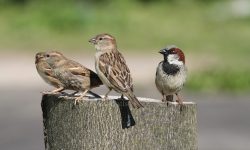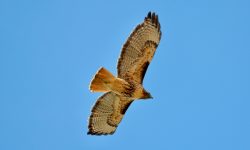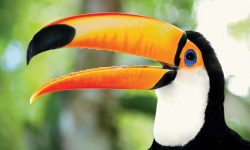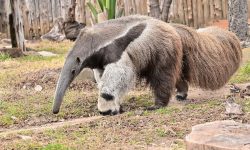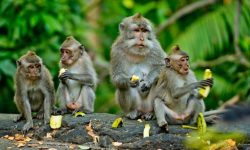Geese are among the most intelligent and adaptable birds in the waterfowl family. Known for their long migrations, loyal pair bonds, and striking social behaviors, geese embody a unique blend of elegance and toughness. In this article, we’ll explore 25 fascinating characteristics of geese, uncovering the science behind their anatomy, instincts, and ecological role in the natural world.
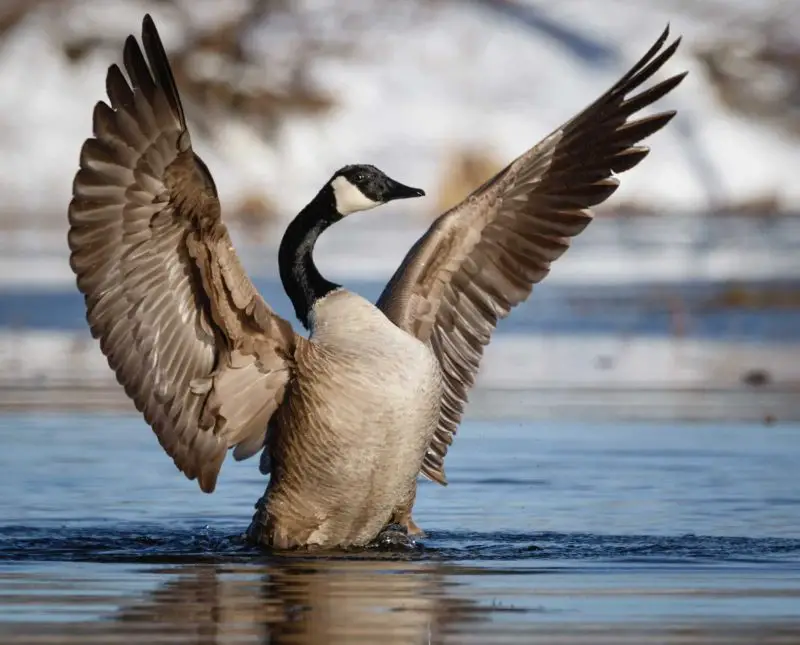
1. Long Necks for Grazing and Vigilance
Picture a windswept meadow or the reed-lined edge of a northern lake. There, standing tall among the grasses, a goose scans the horizon with unblinking eyes while pulling tufts of greenery from the earth. This iconic image reveals more than elegance—it’s a survival strategy carved by evolution. The goose’s long, flexible neck allows it to graze efficiently across uneven terrain and reach submerged plants beneath the water’s surface without diving.
But there’s more to the neck than feeding. In a flock, while some geese lower their heads to eat, others lift theirs skyward as sentinels. This staggered posture ensures at least one watchful eye is always scanning for foxes, coyotes, or eagles. It’s a living periscope system—instinctive, communal, and refined by centuries of predator-prey dynamics. In this way, the goose’s neck becomes not just a tool for foraging, but an antenna of vigilance tuned to the wilderness around it.
2. Monogamous Pair Bonds
Across misty lakes and wind-swept marshes, one of nature’s most touching partnerships quietly unfolds. Geese form lifelong bonds, choosing a mate and remaining loyal through each migration and nesting season. These pairings are not fleeting—they’re a fusion of teamwork, devotion, and survival strategy. Whether they’re flying in tight formation or standing shoulder to shoulder against predators, mated geese move as one. They share nearly every task: building their nest in tandem, taking turns incubating eggs, and fiercely defending their young. Such synchrony boosts their chances of reproductive success and paints a rare picture of enduring avian love—a kind of wild vow renewed with every season.
3. Highly Protective Parents
When goslings emerge from their eggs, downy and defenseless, they enter a world brimming with danger. But their greatest protection stands tall and honking nearby—their parents. In the realm of geese, both mother and father become full-time bodyguards. Their alertness sharpens, their tolerance drops, and their courage seems to swell. From foxes lurking in the grass to hawks circling above, few threats go unchallenged.
With outstretched wings, threatening hisses, and even physical charges, geese will take on animals much larger than themselves if their young are at risk. They guide their goslings in tight formation, teaching them to forage, swim, and stay close. Every step is a lesson. Every honk is a warning or reassurance. This fierce, shared investment in parenting gives young geese more than just a chance—it gives them a survival advantage grounded in discipline, instinct, and family resilience.
4. Remarkable Migratory Navigation
When autumn chills sweep across northern skies, flocks of geese lift into the wind, tracing invisible highways that stretch for thousands of miles. Their journey isn’t random—it’s a marvel of biological navigation honed over generations. Geese possess an internal compass guided by Earth’s magnetic field, as well as an uncanny ability to use the position of the sun, stars, and even polarized light to chart their way.
But what truly sets them apart is their memory. Juvenile geese learn routes from their parents, memorizing geographic features like mountain ranges, rivers, and coastlines. Some studies suggest geese may even use their keen eyesight to recognize landmarks from the air. Year after year, they return to the very wetlands where they hatched, guided by instinct and experience. It’s a living map etched not on paper, but in muscle, mind, and skyward instinct—a journey not only of survival but of ancestral loyalty to place.
5. V-Formation Flight Efficiency
High above the earth, silhouetted against sunrise or snow-filled skies, geese carve an unmistakable V into the air—a symbol of unity, but also a masterpiece of aerodynamic strategy. Each bird positions itself just behind and to the side of the one ahead, catching the upwash from its wings. This subtle boost reduces air resistance and helps conserve energy across the entire flock.
As the lead goose tires, it falls back, and another takes its place—a seamless rotation of labor built on instinct and mutual benefit. Scientists estimate that this formation can improve flight efficiency by up to 70 percent. It’s a feat of natural engineering, fine-tuned by evolution and repeated by flocks around the globe, a living choreography where every wingbeat counts and every position matters.
6. Powerful Flight Muscles
Beneath the sleek feathers of a goose lies a muscular marvel built for epic journeys. Their breast muscles, particularly the pectoralis major, are massive—making up nearly a third of their total body mass. These muscles contract with rhythmic power, lifting and propelling the bird for hours without rest.
In flight, geese beat their wings with remarkable endurance, gliding on thermals and pushing through headwinds across mountain ranges and open seas. Their strong chest is not just for show—it’s a vital engine fueled by a high metabolism and efficient respiratory system. It’s what enables a Canada Goose to fly over 1,500 miles during migration without faltering. These flight muscles are the silent engines behind the goose’s legendary stamina, tested by storm and distance, and proven with every beat toward a distant horizon.
7. Loud, Communicative Calls
Across misty marshes and echoing skies, the voices of geese rise like trumpets of the wild. Their calls aren’t random noise—they’re deliberate signals encoded with meaning. Whether warning of danger, coordinating takeoffs, or keeping families together in flight, each honk carries intention.
Geese possess a rich acoustic language. Scientists have identified dozens of distinct vocalizations, from low murmurs between mates to sharp barks of alarm. These calls can travel vast distances, cutting through wind and water. Within flocks, individuals recognize each other’s voices, allowing parents and offspring to reconnect even amid the chaos of migration. The goose’s call, once heard, is unforgettable—a blend of raw wilderness and precise communication, woven into every moment of their collective journey.
8. Vegetation-Based Diets
As dawn light filters through cattails and meadow grass, geese lower their heads with quiet determination. Unlike raptors or omnivorous scavengers, geese are herbivores by design. Their diet consists primarily of grasses, sedges, grains, and aquatic vegetation. Their bills, equipped with fine serrations known as tomia, function like shears—perfect for clipping tender shoots or uprooting submerged plants without waste.
In wetlands, they forage with heads underwater, combing through water lilies and pondweeds. In fields, they graze like feathered cattle, helping to keep vegetation in check. And in agricultural zones, they readily adapt to leftover corn, wheat, or barley. Through their feeding, geese influence plant distribution, nutrient cycling, and seed dispersal. They are not merely consumers but active shapers of the ecosystems they inhabit—agents of both balance and change in the green web of life.
9. Webbed Feet and Aquatic Grace
Step into the shallows of a lake where geese glide like low-slung boats, and you’ll see the secret to their aquatic mastery: webbed feet. These broad, lobed paddles are more than just a swimmer’s accessory—they’re tools forged by evolution for life at the water’s edge. With each stroke, a goose pushes against the water, generating smooth propulsion with minimal effort. On land, those same feet offer balance and traction, whether striding across muddy banks or icy fields.
But the webbing does more than move—it supports, stabilizes, and adapts. Geese can shift their weight with subtlety, using the wide surface to maintain balance while standing or preening. Even in flight, tucked beneath their feathers, these feet retain their utility, regulating body temperature by dissipating excess heat. Functional and efficient, the webbed foot is a quiet masterpiece—a natural bridge between water and land, enabling the goose to inhabit both realms with grace and ease.
10. Waterproof Plumage
A goose slicing across a misty pond seems to glide untouched by the elements, and its secret lies in the fine armor it wears. Each feather is a marvel of microengineering, layered to lock together tightly and coated in oil from the bird’s uropygial gland, located near the tail. This natural waterproofing creates a slick, hydrophobic barrier that repels water like raindrops off waxed canvas.
But the real genius lies beneath. Beneath the sleek outer feathers is a layer of soft down that traps warm air close to the body. This insulating underlayer is so effective that geese can float in icy waters or rest on frozen ground without losing core warmth. Together, the outer shield and inner insulation form a double defense—one that defies wet and cold while allowing geese to thrive in the harshest aquatic and Arctic landscapes.
11. Seasonal Molting Cycles
Each year, in a rhythm as ancient as migration itself, geese undergo a dramatic transformation known as molting. For several weeks in early summer, they shed and regrow their flight feathers—grounding even the most seasoned fliers. Without the ability to take to the sky, these birds retreat to secluded wetlands where food is abundant and predators are few.
The process isn’t cosmetic—it’s critical. New feathers must be strong, aerodynamic, and waterproof to withstand the long journeys ahead. During this time, geese are especially vulnerable, relying on stealth, group vigilance, and proximity to water for protection. As the new feathers emerge, sleek and strong, the goose prepares once again to rise into the open skies, reborn for another season of flight and endurance. During this vulnerable period, they seek out remote wetlands where food is plentiful and predators scarce. It’s a built-in reset—a pause in their aerial journeys to renew the tools that carry them across continents.
12. Thermal Adaptations for Cold Climates
Winter winds whip across frozen lakes, but the goose remains unfazed. Beneath its sleek outer plumage lies a secret weapon—down feathers that create one of nature’s finest insulation systems. These ultra-soft feathers trap layers of warm air close to the body, forming a barrier so effective that geese can sleep on ice without their body temperature dropping.
Yet their thermal armor goes deeper. Geese employ a countercurrent heat exchange system in their legs, where warm blood flowing from the body heats the cooler blood returning from the extremities. This brilliant adaptation minimizes heat loss, allowing geese to stand barefoot on snow for hours. Even their behavior complements this resilience: huddling together, tucking their feet beneath them, or resting on one leg to preserve warmth. In every frigid gust and icy perch, the goose is a master of winter, engineered to thrive where most birds would falter.
13. Sentinel Behavior
In the dance of geese across meadows and marshes, vigilance is never left to chance. As some birds lower their heads to graze, others rise like watchtowers, scanning the horizon with alert eyes and craning necks. This act of taking turns to keep watch is called sentinel behavior—a communal strategy that turns a simple flock into a synchronized security system.
When one goose spots trouble—a prowling fox or a shadow above—it emits a sharp, unmistakable honk that ripples through the group like a shockwave. In seconds, the flock either takes flight or forms a defensive stance. This cooperation isn’t planned—it’s instinctual. But behind it lies a sophisticated survival mechanism rooted in group cohesion, where trust is distributed through sound, posture, and unwavering awareness. It’s a model of teamwork in the wild, refined by generations and heard in every warning cry that cuts across the wind.
14. Aggressive Territoriality
When the nesting season arrives, geese transform from serene grazers into fierce guardians of their domain. With wings spread wide and necks extended in defiant arcs, they charge intruders—be it fox, raccoon, or wandering human—with an audacity that belies their gentle appearance. This territorial aggression is not mere bravado; it’s a deeply rooted instinct to defend nesting grounds, mates, and offspring at all costs.
Their displays are theatrical and effective: loud hissing, head pumping, wing slapping, and sometimes outright attack. Even within their own species, competition for prime nesting spots can turn combative. But this aggression serves a purpose—it deters threats, asserts dominance, and ensures that only the most committed and capable geese reproduce. In the seasonal drama of reproduction, territoriality becomes both shield and sword—a raw expression of survival and legacy.
15. Long-Term Memory and Learning
In a world shaped by changing seasons and vast distances, memory is more than useful—it’s essential. Geese possess exceptional long-term memory, a trait that sets them apart among birds. They remember the precise location of breeding grounds, wintering areas, and stopover wetlands year after year, navigating with remarkable fidelity. Their ability to recall not only landscapes but also social experiences—such as trusted mates, flock members, or even human caretakers—adds layers of complexity to their behavior.
Scientific studies and field observations reveal that geese can recognize individual humans and respond differently based on past interactions. This cognitive sharpness plays a crucial role in their survival strategy, helping them avoid dangers, locate resources, and strengthen social bonds. Their brains store not just instinct, but experience—allowing each goose to become a learner of its world and a transmitter of knowledge across generations.
16. Hierarchical Social Structures
Beneath the graceful façade of a goose flock lies an intricate web of social order. These birds don’t just fly together—they operate within a clearly defined hierarchy that shapes every aspect of their communal life. Dominant pairs lead the charge, often guiding migration routes, choosing feeding grounds, and asserting control over prized nesting territories. Their authority is respected, and their presence sets the rhythm for the rest of the group.
Such structure isn’t static—it evolves with experience, age, and seasonal shifts. Younger geese observe and learn, gradually earning rank through displays of strength, confidence, and cooperation. This pecking order minimizes conflict and fosters stability, ensuring the flock functions as a cohesive, responsive unit. It’s a feathered society built on leadership, learning, and an unspoken understanding of one’s place in the aerial chain of command.
17. Unique Plumage Patterns
To the untrained eye, a goose might appear like any other in the flock, but their plumage holds secrets written in subtle brushstrokes. Each species boasts its own visual language: the Canada Goose flashes a dramatic white chinstrap against its inky black neck, while the Barnacle Goose wears a striking tuxedo of silver and black. Snow Geese blanket themselves in pure white or dusky gray-blue, like clouds in contrasting moods.
These patterns do more than dazzle—they serve crucial roles in survival and identity. Plumage helps geese recognize members of their species, distinguish between flocks, and even identify mates or offspring within a noisy, crowded wetland. In flight, the markings allow flock members to follow each other’s movements precisely. And for predators, the visual confusion of similar-looking birds can be a vital distraction. In every line and hue, the plumage of a goose is more than aesthetic—it’s a survival script written in feathers.Each species of goose wears a distinct visual signature. From the stark contrast of the Canada Goose’s black neck and white cheek to the snow-white elegance of the Snow Goose, these markings are vital for species recognition, camouflage, and even individual identification within flocks.
18. Culturally Significant Symbols
In the myths of northern Europe, geese were once thought to be messengers between worlds—migrating not just across continents, but between the earthly and the divine. In China, paired geese have symbolized marital fidelity for centuries, their lifelong bonds becoming poetic metaphors for enduring love. Native American lore often casts the goose as a guardian of transitions, its honking call heralding the change of seasons and the passing of ancestral wisdom.
Even in modern culture, the V-shaped flight of geese has come to represent teamwork and leadership, appearing in motivational speeches and business strategy. The sight of a migrating flock stirs something ancient within us—a recognition of rhythm, direction, and family that transcends species. In fields and stories alike, geese are more than birds; they are symbols of unity, perseverance, and our timeless connection to the natural world.Across cultures, geese symbolize loyalty, direction, and seasonal rhythm. From ancient myths to modern poetry, they appear as omens, guides, and emblems of family unity. In watching their migrations, humans have long seen reflections of their own journeys.
19. Diurnal Activity Rhythms
From the first golden gleam of dawn to the quiet hush of dusk, geese follow a rhythm dictated by the sun. These birds are diurnal, meaning their activity peaks during daylight hours—a strategy that aligns perfectly with foraging opportunities and predator awareness. In the early morning, flocks take to the sky or fan out across meadows and wetlands in search of fresh shoots, grains, or aquatic vegetation.
By mid-day, geese retreat to water or open fields for rest, preening, and social interaction. These midday lulls aren’t idle—they’re crucial moments of feather maintenance and communal bonding. As afternoon light stretches into evening, activity resumes with renewed foraging or short-distance movements toward nighttime roosts. Under starlight, geese settle in—often on open water—where subtle ripples and wide visibility offer early warning against nocturnal threats. This sun-synced lifestyle ensures geese stay nourished, protected, and connected to the rhythms of the natural world around them.Geese rise with the sun and rest under starlight. Their daily routines are governed by daylight, with foraging, preening, and socializing peaking in the morning and late afternoon. Nighttime brings roosting near water, where ripples warn of predators and darkness offers concealment.
20. Ecological Role in Wetlands
Wade through a thriving wetland, and the invisible hand of the goose becomes clear. As these birds graze, they trim aquatic vegetation, preventing overgrowth and opening pathways for sunlight to reach submerged plants. Their trampling feet stir the sediment, releasing nutrients that fuel phytoplankton and microscopic life. Their droppings, far from waste, are organic fertilizer—boosting the productivity of marshes and meadows.
Beyond physical influence, geese are ecological connectors. Their movements distribute seeds between ponds, their feeding patterns shift plant communities, and their presence attracts predators, balancing food webs. In short, geese are ecosystem engineers—nonstop cultivators who shape their habitat as much as they are shaped by it. Where geese thrive, wetlands flourish, and the ripple effects touch every reed, insect, and fish in the food chain.As grazers and movers, geese shape their habitats. Their feeding clears dense vegetation, their droppings fertilize soil, and their movement stirs aquatic sediment. These roles make them keystone contributors to wetland vitality and biodiversity.
21. Extended Family Bonds
Geese don’t just raise their young—they guide them through the seasons like mentors in flight school. After hatching, goslings remain with their parents well beyond the nesting stage, often migrating alongside them and learning the skills necessary to survive. In many species, these family units stay intact through the fall and sometimes into the next spring, forming tight-knit flocks where learning is communal and experience is passed down like heirloom knowledge.
Older siblings sometimes assist in caring for new broods, offering a rare glimpse into cooperative breeding behaviors. This extended family system creates bonds of trust and security, turning each migration into both a journey of endurance and a classroom in the sky. Within these feathered families, lessons in foraging, flying, and vigilance are not taught in isolation—they’re shared across generations, ensuring that each young goose grows into a confident member of the flock’s collective future.Goslings don’t just hatch and vanish. They stay with their parents through migration and sometimes into the next season. This prolonged guidance teaches them survival skills and social behaviors, strengthening the next generation and anchoring the family-centered culture of geese.
22. Adaptability to Human Landscapes
Once wary of civilization, geese have become unlikely urban pioneers. Today, they stride across manicured golf courses, nest beside city ponds, and graze on suburban lawns as comfortably as they would in a remote wetland. This remarkable shift reflects a keen ability to assess and exploit human-altered environments.
Urban geese take advantage of predictable food sources, open spaces free of predators, and warm artificial ponds that remain unfrozen through winter. They’ve adapted their behavior—altering migration patterns, modifying nesting sites, and even shifting social dynamics to suit their new surroundings. But their presence is not without tension: overgrazing, droppings, and territorial displays can create friction with human communities. Yet, this adaptability is a symbol of their resilience. It underscores a broader truth: in the dance between wildlife and civilization, geese are not merely surviving—they are thriving in the margins of our modern world.Parking lots, golf courses, city parks—modern geese have embraced the human world. Their ability to find food, nest, and navigate in urban and suburban settings showcases their unmatched flexibility. While this sometimes leads to conflict, it’s a testament to their evolutionary ingenuity.
23. Subtle Shifts in a Changing Landscape
Not all of a goose’s travels span continents. Beyond their famed migrations, geese engage in smaller, finely tuned movements—seasonal range shifts that allow them to adapt to rapidly changing conditions. As wetlands dry, snow melts, crops are harvested, or danger looms, geese respond in near-real time, moving from one feeding ground to another, often within a single watershed or region.
These movements are guided by acute environmental awareness. A sudden frost might prompt a flock to descend into lower valleys; a fresh field of sprouting grains may lure them miles from their usual stopover. It’s an elegant dance of flexibility—a strategy that doesn’t require crossing hemispheres but still demands intuition, memory, and communication. These micro-migrations illustrate the goose’s remarkable ability to balance long-term instinct with short-term opportunity, a fluid rhythm that keeps them one wingbeat ahead of scarcity or risk.
24. Coordinated Group Defense
In the realm of geese, survival is not a solitary mission—it’s a team sport. When danger lurks—a fox creeping in the reeds or a raptor circling above—just one alarmed honk can set off a synchronized response across the entire flock. In mere seconds, the air fills with urgent cries, wings snap open, and the group lifts in a unified explosion of flight.
This rapid reaction isn’t chaos—it’s a highly effective defense system built on communication and cohesion. Geese rely on a shared vigilance that multiplies the power of a single sentinel. By acting as one, they confuse predators, protect vulnerable members, and increase the odds of collective survival. It’s a brilliant display of unity—where alarm spreads like wildfire and escape becomes a perfectly timed ballet of wings.
25. Incredible Species Diversity
Step into nearly any wetland on Earth, and chances are you’ll encounter a species of goose perfectly adapted to that environment. From the rugged highlands where the Bar-headed Goose soars above the Himalayas, to the volcanic archipelagos that shelter the rare Hawaiian Nēnē, geese display an astonishing range of adaptations. With over 30 species spread across continents—excluding only Antarctica—these birds are evolutionary explorers.
Each species is a unique expression of the goose blueprint, shaped by habitat, climate, and diet. Some have evolved to endure arid deserts, others thrive in Arctic tundra. Body size, plumage patterns, vocalizations, and behavior vary dramatically—yet all geese share that unmistakable silhouette and a deep-rooted instinct to migrate, bond, and defend. Their diversity isn’t just numerical; it’s ecological, behavioral, and visual—a living gallery of nature’s ingenuity in sculpting survival through variation.. Each one is a variation on a theme: long-necked travelers adapted to deserts, tundras, mountains, and marshes. Their diversity is a testament to nature’s creativity—and the goose’s evolutionary success.
Conclusion
Geese are more than seasonal visitors honking overhead—they are intelligent, social, and highly adaptable birds that play critical roles in ecosystems around the world. From their family dynamics to their long-distance migrations, each characteristic tells a story of survival, cooperation, and evolutionary brilliance. Whether seen in a quiet marsh or an urban park, geese remind us of nature’s ability to balance beauty with resilience.


